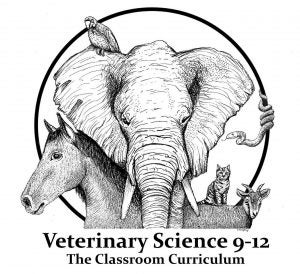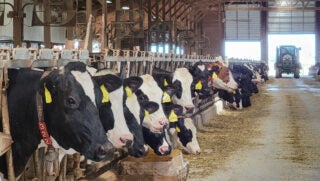Finding the right resource can make all the difference in how effectively a high school teacher communicates with students — and in how receptive those students are to the lessons. For educators looking to nurture a foundation for veterinary schooling (or ag science in general), Cornell University has published an extensive — and expansive — update of the Veterinary Science 9-12: The Classroom Curriculum, which was originally released in 2002.
Back then, the veterinary curriculum was certainly a welcome resource for teachers — nothing like it had existed before. It took off and was used in agriculture education around the nation. After several years in use, and several changes in ownership, the curriculum ultimately made its way back into the hands of Cornell, and a team of volunteers began laying the foundation for an overhaul of the program.
What has since emerged spans 25 chapters and roughly 4,000 slides and PDF pages — a total that’s about 10 times bigger than the original version. Julia Smith and Jeff Perry were the directors of the project, and, in partnership with SUNY-Alfred, they released the new curriculum in March 2018.
“It’s been my baby for 10 years,” Smith says, reflecting on the effort that went into it for so long.

This new version was funded by a USDA grant and is considerably more in-depth than its predecessor. Consisting of PowerPoint slides covering such topics as the cardiovascular system, microbiology, animal roles in society, hospital procedures, and pharmacology, it was created in a way that teachers could custom-design or select specific lesson plans to fit their students’ goals. And that makes sense. The needs of one class — not just from state to state, but also from locality to locality — are often very different than another class’s needs. For example, teachers in a beef-producing region likely wouldn’t be zeroing in on the same topics that teachers in urban communities do.
“It could even be used in areas outside of veterinary science,” Smith notes. “You could pull in areas for food science, animal science, large-animal and small-animal vet science. It’s quite versatile. We designed each lesson to stand alone so that a teacher could do that.”
Smith is an ag teacher but doesn’t have a background in veterinary science specifically. This put her in the perfect position to ask critical questions to help make the content relatable for people without built-in veterinary expertise.
“We realized as we were putting this curriculum together is that sometimes the bites were bigger than we wanted them to be,” she says.
In essence, the writing had to be dialed down to a level that high school students would understand. That may have been difficult to execute, and taken a few revisions to get there, but Smith credits the writers with getting that accomplished.

Each PowerPoint slide has notes at the bottom that offer supplemental resources for teachers, and there are glossaries included that define some of the tougher terms. There, I learned what a “prokaryote” is. (It’s a simple, unicellular organism that lacks membrane-bound organelles and a distinctive nucleus.) Yay #science!
With the curriculum having only recently completed its first full semester in classrooms, the feedback from educators has been resoundingly positive. Teachers have been finding what lessons fit them the best and have been coming up with strategies to build upon lessons and grow their own knowledge along the way.
“Ag teachers are especially good at that, because we so frequently teach outside our comfort zones,” Smith says.
Smith and Perry were not alone on bringing this project to fruition, of course. Among the other leaders involved were editor Sue Berescik, who also did the layout and much of the fact-checking, and writers Tara Berescik, Melanie Berndtson, Mattea LeFever, Douglas Pearson, and Devon O’Keefe. The lead evaluator, Scott Shablak from Syracuse University, played a key role in guiding the grant, among other tasks. Dr. Melvin Chambliss, a veterinarian with SUNY-Alfred who assisted with fact-checking, was a co-director/principal investigator on the grant.
One of the biggest goals right now is getting this curriculum into the hands of teachers. Because there’s not really an infrastructure anymore to help distribute this kind of material, Smith and others have been doing things like working Cornell’s booth at the National FFA Convention & Expo to help spread the word. The National Association of Agricultural Educators and Ward’s Science have been helpful on that front, too.
The more people who can get their hands on it, the more benefit we’ll see in ag circles.
“For me,” Smith says, “this was partly about keeping teachers from burning out. We want to do whatever we can to keep this profession vibrant and alive and growing.”
The Veterinary Science 9-12: The Classroom Curriculum is available for $150 and can be found at this link. Once purchased, access to the link is permanent.



